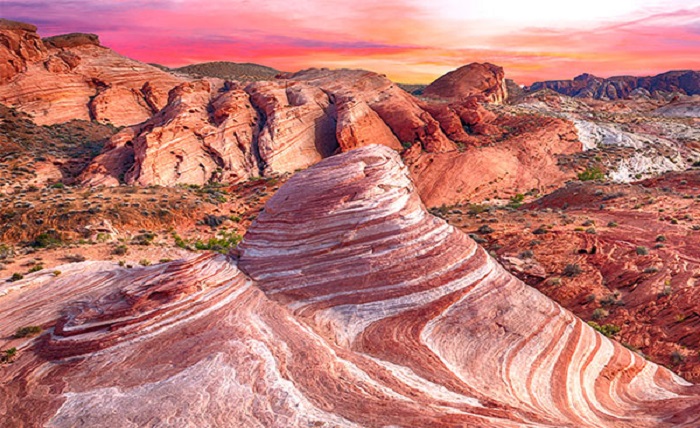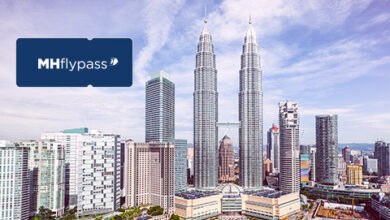Valley of Fire Weather: Climate of Nevada’s Stunning State Park

Table of Contents
Welcome to the mesmerizing world of Valley of Fire State Park, located in the heart of Nevada. Join us as we uncover the secrets of this remarkable park and discover how its weather conditions contribute to its natural wonders.
Valley of Fire Weather Location
The Valley of Fire is located in Nevada, United States. As a desert region, it experiences typical desert weather conditions. The weather in the Valley of Fire can be quite extreme, with hot summers and relatively mild winters.
The Enchanting Valley of Fire
Nestled within the Mojave Desert, the Valley of Fire State Park showcases nature’s artistry with its striking red sandstone formations and vibrant landscapes. The park gets its name from the breathtaking red hues that dominate the area, creating an otherworldly atmosphere. This geological masterpiece spans over 46,000 acres and provides a surreal backdrop for outdoor enthusiasts, nature lovers, and photographers.
Weather Patterns in the Valley of Fire
Climatic ordinarily
The Valley of Fire experiences a desert climate characterized by hot, arid summers and mild winters. The region receives minimal rainfall throughout the year, and the aridity of the desert landscape adds to its unique charm.
Seasonal Variations
Spring: A Burst of Color
As winter bids farewell, the Valley of Fire transforms into a kaleidoscope of colors during the spring season. The Valley of Fire weather during spring is characterized by pleasant temperatures, ranging from mild to warm, making it an ideal time for hiking and outdoor activities. The clear blue skies provide a stunning backdrop for photography enthusiasts, capturing the juxtaposition of delicate flowers against the rugged red sandstone formations.
Summer: Embracing the Heat
As summer arrives, so does the scorching desert sun in the Valley of Fire. The weather becomes more intense, with temperatures soaring during the day. However, the summer season also brings unique opportunities to witness breathtaking sunrises and sunsets, as the intense heat generates dramatic hues across the horizon.
Autumn: A Symphony of Earth Tones
The weather begins to cool down, providing relief from the summer heat. The landscape undergoes a transformation as the leaves of the few trees in the area turn various shades of gold, red, and brown. The interplay between the changing foliage and the fiery red sandstone formations creates a breathtaking tapestry of colors. Autumn is an opportune time to explore the numerous hiking trails, where the mild weather and stunning vistas offer an unparalleled experience of natural beauty.
Winter: A Desert Wonderland
Contrary to popular belief, the Valley of Fire does experience winter, albeit milder compared to other regions. Visitors might be fortunate enough to witness occasional snowfall, adding a touch of magic to the desert landscape. Winter in the Valley of Fire offers a quieter and more secluded experience, as the number of tourists decreases. It is the perfect time for contemplative walks, capturing the stark beauty of the red sandstone formations against the crisp white snow.
Best Time to Visit for Ideal Weather
The best time to visit the Valley of Fire for ideal weather conditions is during the spring and fall seasons. Spring showcases the beauty of the blooming desert, while fall offers comfortable temperatures without the scorching heat of summer. These seasons provide the perfect balance between enjoyable weather and fewer crowds, allowing visitors to fully immerse themselves in the natural wonders of the park.
Valley of Fire Safety Precautions
While the Valley of Fire is undoubtedly captivating, it also presents potential risks and hazards. Adhering to safety precautions is vital for preserving personal well-being and the natural environment. By taking appropriate measures, visitors can mitigate accidents and ensure an enjoyable visit.
Navigating the Valley of Fire
Staying on designated trails and paths: Stick to established trails to minimize the risk of damaging delicate ecosystems and encountering hazards.
Following park rules and regulations: Respect posted signs and guidelines provided by the park authorities.
Being aware of wildlife and natural hazards: Keep a safe distance from wildlife and avoid touching or disturbing any plants or animals. Be cautious of potentially venomous creatures and stay alert for natural hazards like loose rocks or flash floods.
Conclusion
The Valley of Fire weather conditions is vital for planning a memorable and safe trip. By familiarizing yourself with the climate, seasonal variations, temperature patterns, wind conditions, & potential extreme weather events, you can make informed decisions regarding outdoor activities and dressing appropriately. Remember to prioritize your safety and comfort while exploring these awe-inspiring natural wonders!




